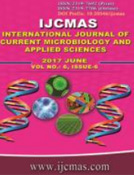


 National Academy of Agricultural Sciences (NAAS)
National Academy of Agricultural Sciences (NAAS)

|
PRINT ISSN : 2319-7692
Online ISSN : 2319-7706 Issues : 12 per year Publisher : Excellent Publishers Email : editorijcmas@gmail.com / submit@ijcmas.com Editor-in-chief: Dr.M.Prakash Index Copernicus ICV 2018: 95.39 NAAS RATING 2020: 5.38 |
Rice (Oryza sativa L.) is a main staple for human consumption all over the world. There is ever increasing demand for rice with increasing population and that too it has to be produced on the same stretch of land or less. Secondly, in many of the rice-rice cropping areas the second crop of rice of late is becoming doubtful due to reduced possibility of season-long availability of water for the succeeding crop due to climate change impacts. Energy is the other critical input. Under such circumstance traditional practice of ratooning offers hope as a climate and resource smart technology. Ratooning in rice offers an opportunity to increase cropping intensity per unit area because of its shorter growth duration than the main crop as it could be grown with 50% less labour, 60% less water and at less cost than the main crop to produce not less than 50% of the main crop yield. The production cost is due to the minimized cost on land preparation, transplanting and crop maintenance. Ratooning, because of its short growth duration also fits well in rainfed areas on residual moisture. Besides these advantages, the success of ratoon rice in the USA and China on commercial scale, and availability potential rice cultivars these days have renewed the interest in ratoon rice culture. The article, therefore, discusses the state of art, research advances and way forward.
 |
 |
 |
 |
 |